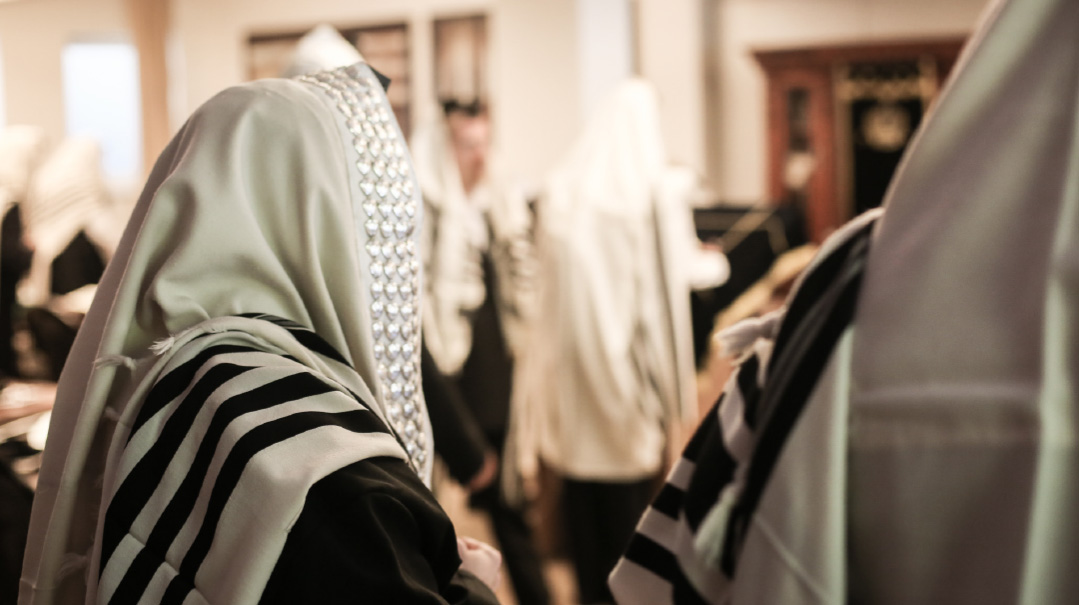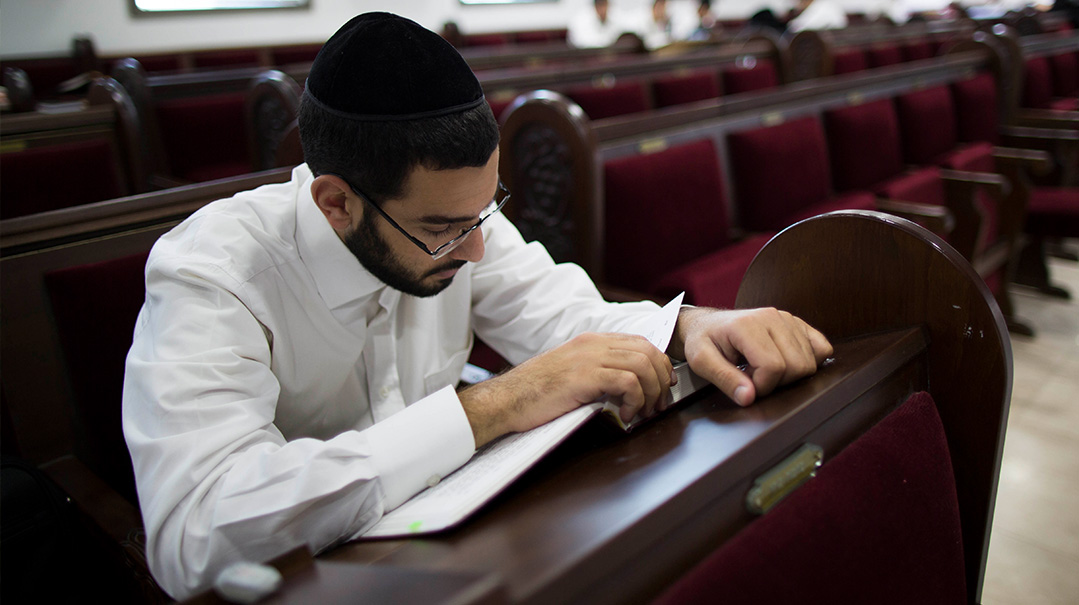On Commitment


It was as the saying goes the mother of all blizzards (at least until 2014). Back in 1978 the East Coast was being pummeled with snow the likes of which hadn’t been seen in years. Boston my hometown was hit especially hard and was buried in over two feet of the white stuff. The drifts reached the second-floor window of our house! I was far away from it all safely learning in yeshivah hundreds of miles away with nary a flake in sight.
A few days after the storm which paralyzed an entire metropolitan area and closed traffic to everything but emergency vehicles I received a surprise letter in the mail (the handwritten variety not the “e” version that has sadly replaced its more permanent and keepsake-style counterpart). It was from the rav of our shul Congregation Chai Odom who was also my uncle the unforgettable Rav Shlomo Margolis ztz”l. Although we rarely corresponded by mail he apparently felt compelled to share his pride over how his kehillah had fared during this trying time.
In his letter the rav related how he trekked to shul for Minchah as the city was experiencing some of the worst snowfall and accompanying winds. About two-thirds of the way there on Strathmore Road he noticed the figure of a man literally stuck in the snow. As he approached he recognized that this snow-bound figure was none other than Mr. Irving Smolar z”l a stalwart elder mispallel who was an anchor of the minyan despite suffering from Parkinson’s or some other related dreadful condition. After yanking him out of the snowbank and dragging him to shul where a minyan had already gathered for davening the rav asked Mr. Smolar how he could even consider venturing outside in such conditions. The indignant response was “What do you mean we have to be in shul for Minchah!”
The letter in my hand was a testament to the devotion and commitment of Chai Odom’s members in general and to the incredible devotion of this particular “shul Yid” to the shul and to tefillah b’tzibbur. The rav proudly related how not even one minyan was missed during the entire week of meteorological mayhem which was especially remarkable in light of the fact that the average age of the winter Minchah attendees was probably close to 80. Each mispallel had his own way of earning extreme sechar halichah — Zaidy Bramson for instance wrapped his legs in garbage bags to brave the drifts.
Ah commitment! When it is lacking nothing stands a chance of success but when it is present nothing stands in its way.
The Torah puts a premium on the value of commitment and bestows a title of honor on its bearer. The nazir who resolves to abstain for at least 30 days from drinking wine becoming defiled by a dead body and cutting his hair is deemed a kadosh. Rav Yerucham Levovitz the Mirrer Mashgiach asked: What has the nazir accomplished to deserve such distinction? Is it such a feat to avoid tumas meis cutting hair and making kiddush on wine for a month? The answer is that if these acts of abstinence are done specifically out of a commitment and a sense of purpose they take on a completely different significance — even if the actual behaviors would have been avoided anyway. The commitment is what transforms the nazir into a kadosh one who is fit to wear the neizer Elokim on his head (or hers for that matter).
The Mashgiach shared this thought with an elite group of Mirrer talmidim including Rav Dovid Povarsky and Rav Shlomo Wolbe who had undertaken the challenge of learning 15 hours over Friday and Shabbos. If they succeeded they would be rewarded with one day’s worth of meals at the table of a member of the yeshivah’s hanhalah instead of the traditional “teg” at the home of a local family. This was apparently a huge incentive akin to a hoverboard or 21-speed bike in today’s currency. The Mashgiach commented that aside from the hasmadah that would be generated if the bochurim learned with a sense of commitment and recognized the value of their undertaking the significance of the project would be even greater.
As challenging as it is to maintain our commitments all year long summertime brings with it fresh challenges to maintaining those commitments and sustaining our level of ruchniyus. For some the nisayon may be adhering to a regular learning regimen. For others it may be davening with a minyan in between ferrying children to camps activities learning and shopping not to mention giving Mommy some respite. There are always heightened challenges to tzniyus too. Immodesty rears its head in vacation spots parks and even just when walking in the street. For women maintaining the dignified look of a bas Yisrael in 90-degree heat is quite a commitment. (I know of a gentile woman who thanked one tzenuah for maintaining a sense of humanity while the rest of society walks around completely unconcerned with personal dignity.)
And then there are the commitments we have to each other. If the family structure is temporarily disrupted due to the altered summer schedule are we still there for one another keeping in close contact and letting everyone know that we care? If we have elderly neighbors who need to be looked after are we still there for them despite our own change of routine and do we at least find a substitute or keep in touch? If our shul’s early minyan is suffering because of the absence of various vacationers or bungalow dwellers are we making an extra effort to attend for the sake of our fellow mispallelim or make other arrangements to ensure the minyan’s continuity?
Ask any long-term daf yomi group what the secret of their success is and the answer will almost always be: commitment. When challenged by a blizzard a power outage the birth of triplets or who knows what else participants in these groups typically display awe-inspiring commitment. Our institutions of Torah and chesed would never survive if not for the wholehearted commitment of those who give of themselves and their resources to ensure their survival.
We all have it in us to commit ourselves to that which we consider important. The Rambam writes in his introduction to Peirush HaMishnayos “If not for those who seem crazy — lulei hamishtagim — the world would remain desolate.” Some people are committed to traveling for months on end for their particular type of business while others engage in dangerous activities that are necessary to create a better world and build a better life for others. We need to realize how many things people and places really depend on our commitment. But those commitments even when they verge on craziness are what sustain us.
An incredible lesson regarding the power of commitment can be gleaned from a story about the gaon Rav Berish a mechutan of the Pnei Yehoshua. The butcher in his town had discovered that the meat for Shavuos was treif and he needed to travel with a mashgiach to the next town to procure some kosher meat for the upcoming Yom Tov. Despite the butcher’s less-than-perfect reputation he had an unwavering commitment to the mitzvah of netilas yadayim. Along their way the butcher entered a wooded area in his quest to perform netilas yadayim against the mashgiach’s better judgment. Shortly thereafter a bloodcurdling scream was heard and the butcher never emerged. The local chevrah kadisha recovered his body and the mashgiach returned home alone without publicizing the incident to the rav.
On Leil Shavuos Rav Berish was learning a difficult Tosafos when the deceased butcher approached him and asked if he could pose a sh’eilah. The rav knowing the man’s penchant for asking frivolous questions deflected his plea for an audience. The butcher persisted and informed the rav that he had been sent down from the Next World with a sh’eilah. Incredulous the rav challenged him to ask his “sender” to explain the Tosafos he was learning. Sure enough the butcher returned and explained the Tosafos to the rav. He then presented his sh’eilah: After his passing there was a debate in Shamayim as to whether he was entitled to enter Olam Haba. On one hand he had demonstrated an unwavering commitment to the mitzvah of netilas yadayim but on the other hand entering a dangerous place to seek water involved some negligence. The Beis Din shel Maalah decided that Rav Berish should pasken.
The rav gave a favorable psak allowing the butcher eternal reward. Rav Berish’s Gemara eventually found its way into the hands of one Rabbi Reuven Berger who passed it on to his nephew Rav Unger ztz”l rav of Chug Chasam Sofer and the story is actually recorded in the margin of the Gemara by Rav Berish who wrote the explanation of the difficult Tosafos as explained by the niftar! (See Otzros HaTorah Chanukah p. 10.) What a powerful lesson on the power of commitment! If an otherwise ordinary Yid can acquire Gan Eden in the merit of dedication to a single mitzvah imagine what opportunities await us if we only display commitment.
Let us review our own commitments and resolve to see them through despite the challenges and hardships we encounter along the way. We may not get any letters of appreciation but Someone will be very proud that we are wearing His crown on our heads.
And we have a lot to learn from simple Yidden who may not be so pashut after all.
Rabbi Henoch Plotnik is the mara d’asra of Congregation Bais Tefila and a ram in Yeshivas Meor Hatorah in Chicago.
Oops! We could not locate your form.







